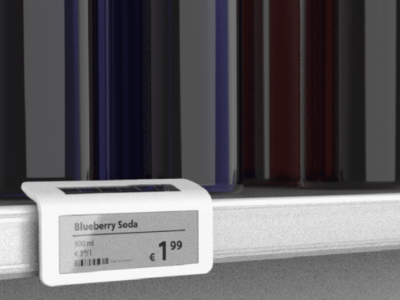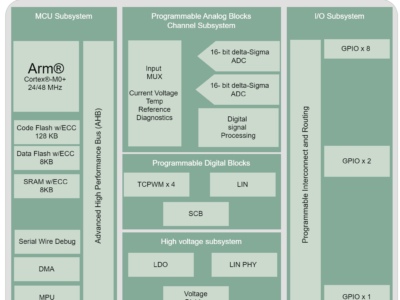
What a contrast to its problem-ridden European competitors STMicroelectroncis and NXP, one might be tempted to believe. But the truth is somewhat more complex. First, ST and NXP are struggling with legacy problems – high debts and, in the case of ST, a failed adventure in the mobile devices markets. In earlier years, Infineon had very similar problems – we remember the wildly failed spin-off of Infineon’s memory business which resulted in cut-throat debts for the German chipmaker. Also Infineon has a past in the volatile mobile phone world, but the company luckily was able to sell these activities to Intel. In the meantime Infineon has shaken off the shadows of the past and sits now on a formidable cash position of more than 2 billion euros. There was a long way from being a penny stock company in April 2009 to Europe’s semiconductor showpiece today, and such a winning streak is not only a matter of luck but of a clear strategy (like "More than Moore") – and hard work.
Part of Infineon’s strategy was to leverage its significant expertise in power semiconductor manufacturing. Infineon was the first manufacturer to utilise 300mm wafers for power devices – a factor that gave the company a significant edge over the rest of the field. And even competitors (like Steve Wainwright in a recent eeNews Europe interview) admit that Infineon is the undisputed market leader in IGBTs. Today Infineon is at the sweet spot in many customer markets, mainly in automotive and industrial application fields.
So is now a good moment to increase the dividend? This is not so sure. Because it clearly goes at the expense of the company’s ability to invest into the future. With sales in this sector of 46% of the company’s total shares, Infineon greatly depends on the automotive market. And this market in turn market depends greatly on the mood of customers in China to spend their money for German premium cars – not exactly a risk-free constellation. While Infineon has very solid positions in power semiconductors and industrial electronics, it runs danger to miss out on future trends like wearable electronics and the Internet of Things. It is well possible that once these technology trends turn into mass markets, a semiconductor company needs to move very swiftly and invest heavily into R&D for related applications. In such times it might be indispensible to have some cash at hand – and be it for takeovers. Making semiconductor is a capital-intensive business. Infineon should not fork out too much money for dividends just because at presently there is no necessity in sight to invest it in the company. Such necessities will come.
Related articles:
Industrial surprise in Infineon’s strong Q2
"IoT and the car is like a gift for Freescale"
55m euros project ramps up power electronics production plans
 If you enjoyed this article, you will like the following ones: don't miss them by subscribing to :
eeNews on Google News
If you enjoyed this article, you will like the following ones: don't miss them by subscribing to :
eeNews on Google News




